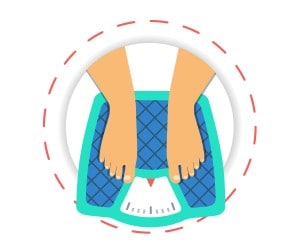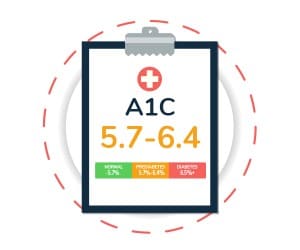Promoting Health for Adults

- Helping People Who Smoke Quit
- Increasing Access to Healthy Foods and Physical Activity
- Preventing Excessive Alcohol Use
- Promoting Lifestyle Change and Disease Management
- Promoting Women’s Reproductive Health
- Promoting Clinical Preventive Services
- Promoting Community Water Fluoridation
- Promoting Mental Health and Emotional Well-Being
- Promoting Better Sleep
Chronic diseases—such as heart disease, cancer, and diabetes—are the leading causes of death and disability in the United States. They are also leading drivers of the nation’s $3.8 trillion in annual health care costs.
Many chronic diseases are caused by a short list of risk behaviors: tobacco use, poor nutrition, physical inactivity, and excessive alcohol use. CDC’s National Center for Chronic Disease Prevention and Health Promotion (NCCDPHP) works to improve health for all adults.
Fast Stats
In the United States:
CDC’s Approach
Helping People Who Smoke Quit and Supporting Comprehensive Programs
Tobacco use is the leading cause of preventable disease, disability, and death in the United States. As of 2018, about 34 million US adults smoke cigarettes, and every day, about 1,600 young people under 18 try their first cigarette. In addition, 58 million people who don’t smoke are exposed to secondhand smoke every year.
CDC’s Office on Smoking and Health focuses on motivating US adults who smoke to try to quit through its Tips From Former Smokers® (Tips®) campaign. Tips features real people who are living with serious health conditions caused by smoking and secondhand smoke exposure. The newest Tips series adds compelling stories from family members who take care of loved ones affected by a smoking-related disease or disability.
Tips connects people who smoke with resources to help them quit, including 1-800-QUIT-NOW, which directs people to free services from their state quitlines.
CDC also funds comprehensive tobacco control activities nationwide through the National Tobacco Control Program to:
- Prevent young people from starting to use tobacco.
- Promote quitting among adults and young people.
- Reduce people’s exposure to secondhand smoke.
- Advance health equity by identifying and eliminating tobacco-related disparities.
Increasing Access to Healthy Foods and Physical Activity Opportunities

A healthy diet and regular physical activity can help prevent weight gain, heart disease, stroke, type 2 diabetes, and some kinds of cancer. However, only about 1 in 10 US adults eats enough fruits or vegetables. Nine in 10 Americans consume more than the recommended amount of sodium. In addition, only 54% of adults get enough aerobic physical activity, and nearly 74% have overweight or obesity.
CDC’s Division of Nutrition, Physical Activity, and Obesity develops and shares proven approaches that make healthy living easier for everyone. CDC works with states, communities, and national partners to help increase healthy food options where people live, learn, work, and play. CDC also partners with states and communities to promote improvements in equitable community design that make physical activity safe and convenient for all persons.
Promoting Lifestyle Change and Disease Management Programs
CDC’s National Diabetes Prevention Program (National DPP), for example, is a public-private partnership working to build a nationwide system to deliver an affordable, evidence-based lifestyle change program proven to prevent or delay type 2 diabetes. Participants in the lifestyle change program learn to make healthy food choices, be more physically active, and find ways to cope with problems and stress. These lifestyle changes can cut their risk of developing type 2 diabetes by as much as 58% (71% for those over 60). The program is delivered in person, online, by distance learning, and through a combination of these formats.
Preventing Excessive Alcohol Use
Excessive alcohol use contributes to more than 140,000 deaths in the United States each year, shortening the lives of those who die by an average of 26 years. Excessive drinking is associated with 1 in 10 deaths among working-age adults and cost the United States $249 billion in 2010.
CDC’s Alcohol Program works with states and communities to:
- Improve public health surveillance on excessive alcohol use, especially binge and underage drinking, and related health outcomes.
- Share effective population strategies to prevent excessive alcohol use and related outcomes.
- Expand state and local public health epidemiology to prevent excessive alcohol use.
Promoting Women’s Reproductive Health
Chronic conditions such as high blood pressure, diabetes, heart disease, and obesity compromise women’s health and can put them at higher risk of pregnancy complications and infertility.

CDC’s Division of Reproductive Health works with partners to improve preconception health, pregnancy care, and infant health by monitoring outcomes, promoting quality clinical services, and conducting research. Health care providers and women can work together to prevent and control chronic conditions both before and during pregnancy, which may improve a woman’s chances of having a healthy pregnancy and delivery.
CDC also tracks the experiences of women before, during, and after pregnancy and collects information on pregnancy-related deaths, through surveillance systems such as the Pregnancy Risk Assessment Monitoring System and the Pregnancy Mortality Surveillance System. Data collected are used to improve all aspects of pregnancy.
Promoting Clinical Preventive Services
Getting good medical care that finds problems early and treats them effectively is an essential part of staying healthy. CDC works with public health partners and health care systems to improve the delivery of clinical preventive services, such as using electronic health records to monitor patient care and adding community health workers to health care teams.
CDC’s Division for Heart Disease and Stroke Prevention supports programs across the country to help millions of Americans control their high blood pressure and reduce other cardiovascular disease risk factors. For example, the WISEWOMAN (Well-Integrated Screening and Evaluation for WOMen Across the Nation) program works to reduce heart disease and stroke risk factors for women aged 40 to 64 with low incomes and little or no health insurance.
Participants receive preventive health services such as blood pressure, cholesterol, and diabetes screenings. They are counseled about their risk of heart disease and stroke and referred to lifestyle change programs and other community resources that can help them control their blood pressure, eat a healthier diet, be physically active, and quit smoking.
CDC’s Division of Cancer Prevention and Control works with national organizations and state and local health agencies to help people lower their cancer risk by increasing the use of effective cancer prevention strategies and screening tests. Screening tests can help detect pre-cancerous colorectal and cervical conditions that if treated can prevent cancers from developing and find colorectal, cervical, breast, and lung cancers early, when treatment works best.
CDC’s Colorectal Cancer Control Program funds 20 states, 8 universities, 2 tribal organizations, and 5 other organizations to increase colon cancer screening rates among men and women aged 45 and older.
CDC’s National Breast and Cervical Cancer Early Detection Program funds programs in all 50 states, the District of Columbia, 6 US territories, and 13 American Indian/Alaska Native tribes or tribal organizations to provide access to breast and cervical cancer screening for women with low incomes and little or no health insurance.
Promoting Community Water Fluoridation

The independent, nonfederal Community Preventive Services Task Force recommends water fluoridation as an effective intervention for reducing cavities for entire communities. Even with the widespread use of products with added fluoride, like toothpaste, studies have found that people living in communities with water fluoridation have 25% fewer cavities than those without fluoridation.
CDC’s Division of Oral Health works with state and national partners to improve water fluoridation quality by training drinking water, oral health and other public health staff. State officials and residents can access water fluoridation information through several online tools.
Promoting Mental Health and Emotional Well-Being
NCCDPHP promotes mental health and emotional well-being, social connectedness, and resilience through research-based health promotion and prevention programs.
To support people with mental health challenges, CDC offers a comprehensive Mental Health website and the award-winning How Right Now/Qué Hacer Ahora campaign. How Right Now is an evidence-based, culturally informed communications campaign that provides tailored mental health resources to strengthen the emotional well-being and resilience of people with chronic stress, grief, and loss related to the COVID-19 pandemic and beyond.
Promoting Better Sleep
Adults should get at least 7 hours a night of sleep, but one-third of US adults report that they usually get less. Not getting enough sleep is linked with many chronic diseases and conditions, including type 2 diabetes, heart disease, obesity, and depression. Not getting enough sleep can also lead to motor vehicle crashes and mistakes at work.
CDC’s Sleep and Sleep Disorders Program in the Division of Population Health works to increase awareness about the need for good sleep and how to get enough.


